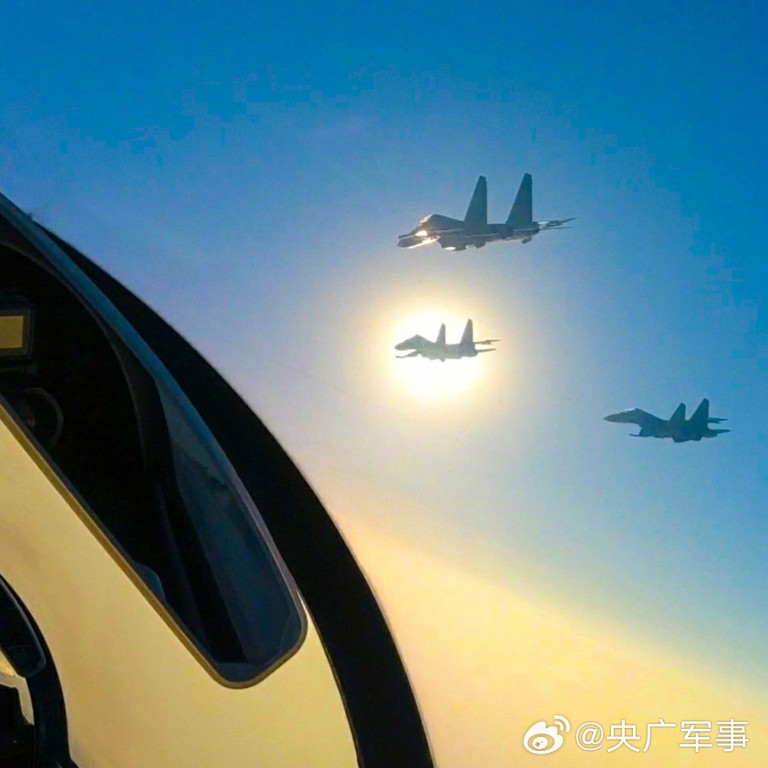
PLA’s latest air and sea drills near Taiwan could signal surprise attack strategy, analysts say
- Taipei tracks at least 143 warplanes and 56 warships entering air defence zone in four days as part of Beijing’s ‘island encirclement patrol’
- Military expert says intensifying pressure from mainland China could be form of ‘cognitive warfare’ to make Taiwanese people drop their guard
A post on the Eastern Theatre Command’s WeChat account said its pilots and ground crews were taking part in long-distance, cross-theatre exercises to practice landing and taking off from unfamiliar airports.
Without saying when the drills took place, the post said the pilots had spent more than 10 hours conducting non-stop flights.
Mainland China aircraft carrier nears Taiwan coast on way to PLA drills
Zhou Chenming, a researcher from the Beijing-based Yuan Wang military science and technology think tank, said the fighter jets involved in the drill would also take part in Beijing’s regular “island encirclement patrol” near Taiwan.
“Like the island encirclement patrol, cross-theatre drills have become routine, taking place in the Taiwan Strait and western Pacific, which is part of combat-readiness training to prepare for the outbreak of a Taiwan contingency,” Zhou said.
Zhou said mobilising different forces from its theatre commands would put the PLA at an advantage when dealing with potential challenges from joint US-Japan forces.
Taiwan has tracked at least 143 PLA warplanes and 56 warships entering its air defence identification zone in the past four days, with 68 sorties entering the zone between 6am on Wednesday and 6am on Thursday – the most in any 24-hour period this year.
“China so far has more than 200 J-20s – a response to the United States’ deployment of hundreds of F-35 Lighting II planes to the region,” said the source, who requested anonymity.
Lu Li-shih, a former instructor at the Taiwanese naval academy in Kaohsiung, said he thought the PLA had also deployed its strategic support force, its rocket force and military units tasked with handling intelligence.
“The PLA has kicked off its all-level ‘cold start’ strategy against Taiwan,” Lu said, referring to a new military doctrine aimed at getting the Taiwanese people and forces accustomed to intensive drills, then launching a surprise attack when it decides to take real action.
In August 2022, the PLA staged its biggest live-fire missile drill ever against the island in response to a Taipei tour made by then US House Speaker Nancy Pelosi.
The Shandong was last reported taking part in major military drills near Taiwan in April. The exercises were carried out to intimidate the self-ruled island after Taiwanese President Tsai Ing-wen met US House Speaker Kevin McCarthy during a stopover in California.
“But now the PLA’s ongoing large-scale drill took place without any reason. It also did not let you know when it had formally started and ended,” Lu said.
“It could be part of Beijing’s cognitive warfare to make Taiwanese people drop their guard.”
Beijing, which views Taiwan as its territory to be taken under its control, by force if necessary, considered the exchanges between the island’s leader and top US officials to be violations of its sovereignty and a breach of Washington’s one-China policy.
Most countries, including the US, do not recognise Taiwan as an independent state, but are opposed to a unilateral change in the cross-strait status quo by force.


